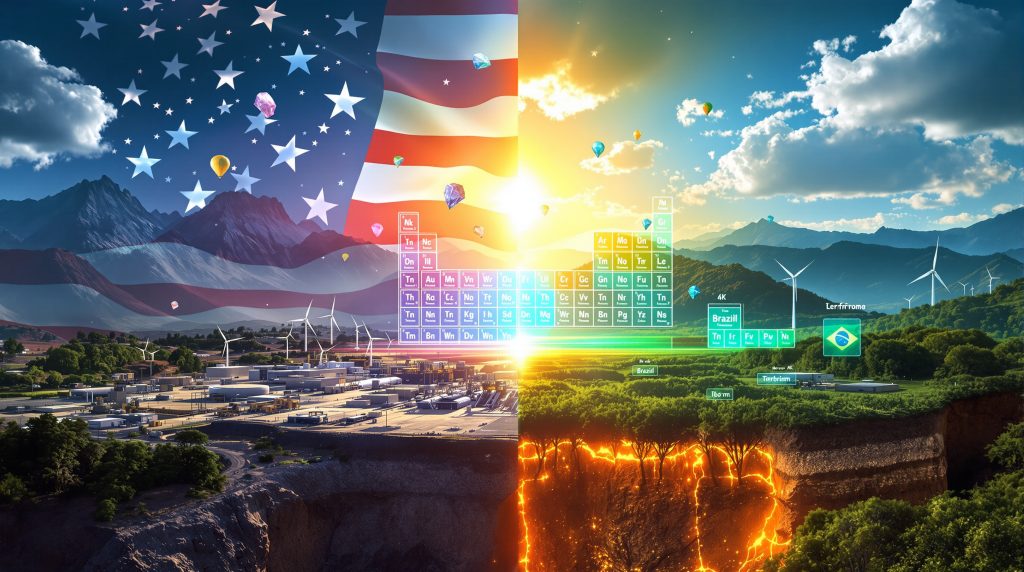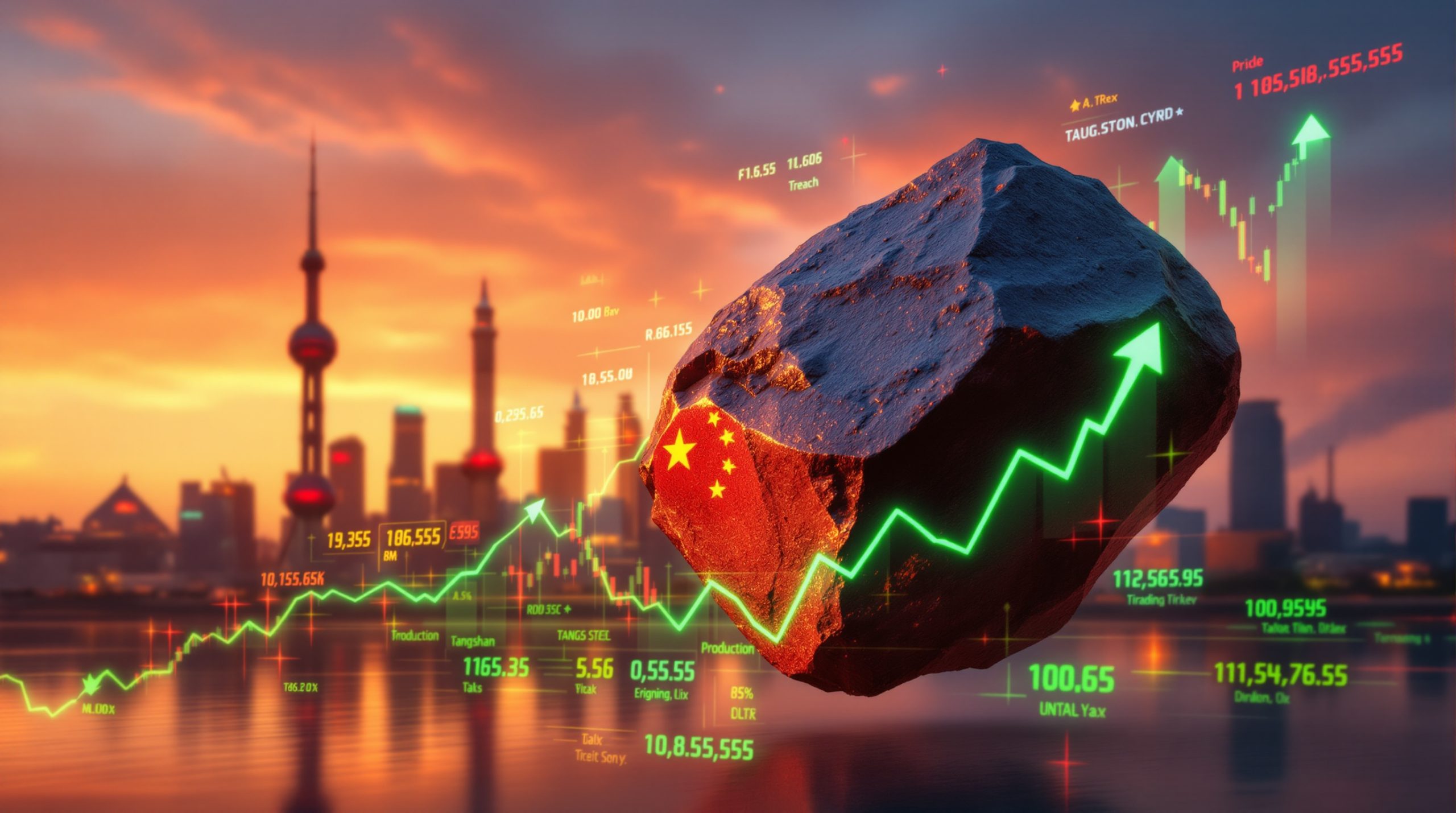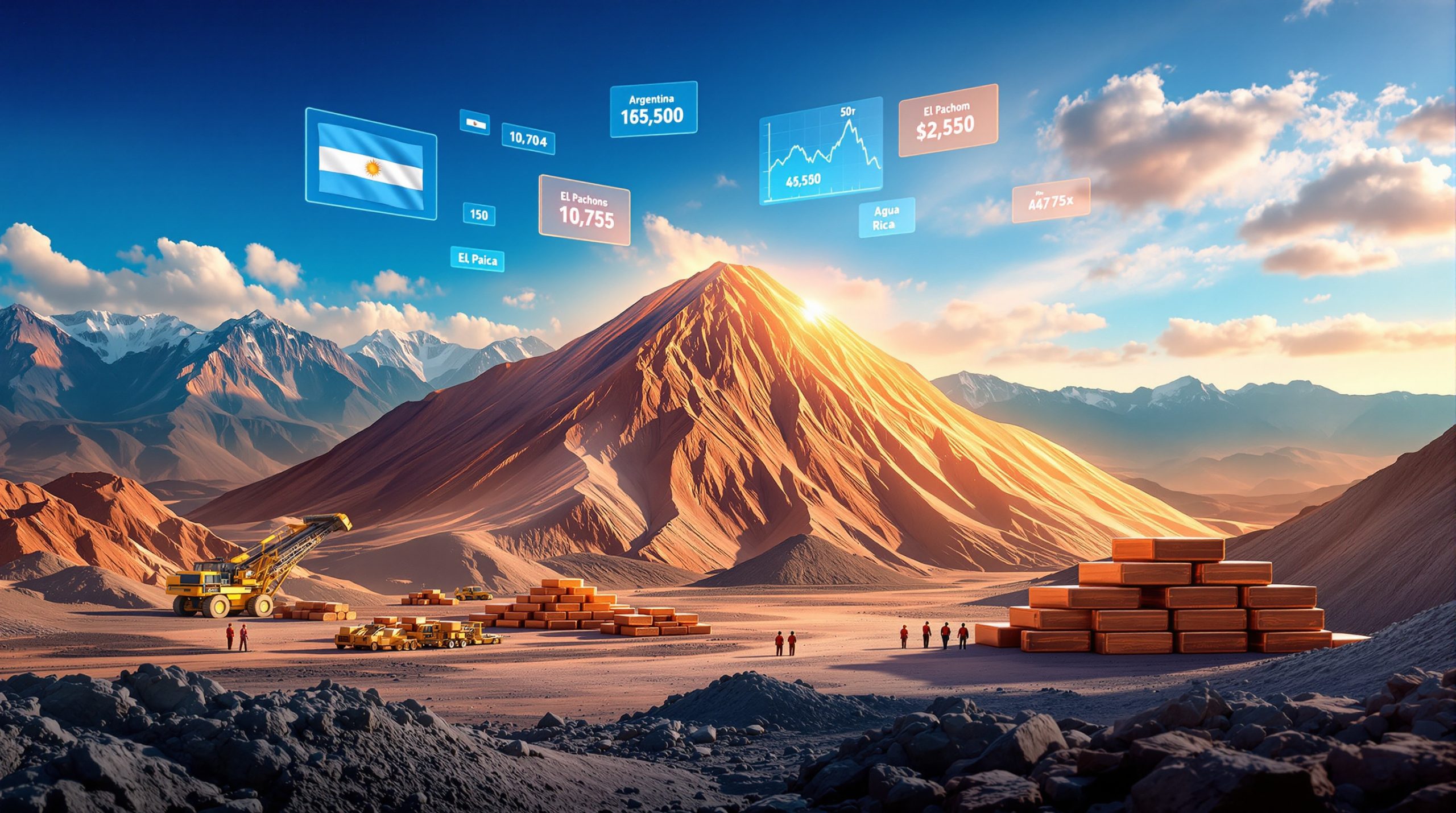The Strategic Importance of Rare Earth Elements
Rare earth elements (REEs) represent a group of 17 metallic elements that, despite their name, are relatively abundant in the Earth's crust. What makes them "rare" isn't their scarcity but rather the challenge of finding them in concentrations economically viable for extraction. These elements have become indispensable components in modern technology, driving innovation across multiple sectors.
The global rare earth supply chain currently faces significant challenges. China dominates the market, controlling approximately 85% of the world's processing capacity despite accounting for only about 35% of global reserves. This concentration creates vulnerabilities for nations dependent on these critical minerals energy transition for advanced manufacturing and defense applications.
"The rare earths market is undergoing a generational shift as the West races to secure its rare earths future," notes Donald Swartz, CEO of Rare Earths Americas, highlighting the urgent need for supply chain diversification.
REEs are essential components in countless applications, from smartphones and computers to advanced defense systems. Neodymium, praseodymium, dysprosium, and terbium are crucial for manufacturing high-performance permanent magnets used in electric vehicles, wind turbines, and military hardware. Other rare earths like europium and yttrium enable the vibrant colors in digital displays and energy-efficient lighting.
The geopolitical significance of these elements has escalated as nations recognize the strategic vulnerability created by concentrated supply chains. Countries including the United States, Australia, and Brazil are actively working to develop domestic sources to reduce dependence on dominant suppliers.
Rare Earths Americas: A New Player in Western Hemisphere Exploration
August 2025 marked the emergence of a significant new player in the Western Hemisphere's rare earth industry. Rare Earths Americas (REA) launched with A$25 million (approximately $16 million) in private funding, positioning itself to capitalize on high-grade rare earth deposits across the Americas.
The company's strategic vision centers on developing multiple projects simultaneously across different jurisdictions, mitigating geographical risk while accelerating the timeline to production. This multi-project approach distinguishes REA from many junior mining companies that typically focus on single-asset development.
REA's asset portfolio spans strategically located projects across the United States and Brazil, two nations with increasingly supportive policy environments for critical minerals development. The company claims it is "well positioned" to strengthen crucial rare earth supply chains across the Western Hemisphere.
While specific details about the leadership team's backgrounds weren't disclosed, the substantial initial funding indicates strong investor confidence in both the management's capabilities and the quality of the identified assets. This level of early-stage funding is particularly noteworthy in the mining industry evolution, where initial capital can be difficult to secure.
US Exploration Projects: The Foothills Initiative
The Foothills project represents one of REA's most promising US-based assets. Located on private land in the United States, this strategic positioning offers significant advantages for development speed and regulatory certainty compared to projects on federal lands.
What makes the Foothills project particularly remarkable is its exceptional grade profile, with concentrations reaching up to 41.3% total rare earth oxides (TREO). For context, many operating rare earth mines globally work with grades below 10%, making this deposit potentially one of the highest-grade discoveries in the Western Hemisphere.
The project boasts high concentrations of heavy rare earth elements, which are particularly valuable due to their limited global supply and critical applications. These elements are integral to producing high-performance magnets essential for electric vehicle motors, wind turbine generators, and defense applications.
From a development perspective, the Foothills initiative benefits from several key advantages. Being situated on private land streamlines the permitting process, potentially reducing the timeline to production by years compared to projects on public lands. Additionally, the site benefits from efficient logistics and low-cost power access, factors that significantly impact project economics.
The streamlined permitting process available for projects on private land could potentially allow REA to advance from exploration to development more rapidly than competitors facing more complex regulatory hurdles on federal lands.
Brazil's Rare Earth Potential: Alpha and Constellation Projects
Brazil has emerged as a focal point for rare earths exploration in US and Brazil, with REA's Alpha and Constellation projects representing some of the most promising discoveries in recent years. The scale of these discoveries is truly remarkable, with reports indicating more than one billion tonnes of high-grade ionic clay rare earth mineralization.
Ionic clay deposits represent a particularly advantageous form of rare earth mineralization. Unlike hard-rock deposits that require energy-intensive crushing and complex chemical processing, ionic clay deposits can often be processed using more environmentally friendly extraction methods. These deposits typically allow for simpler extraction using ion-exchange techniques, potentially reducing both capital expenditure and environmental impact.
The Alpha and Constellation projects are especially noteworthy for their content of heavy rare earths like dysprosium and terbium. These elements are indispensable for manufacturing high-performance permanent magnets but are in critically short supply outside of China. Their presence in significant concentrations enhances the strategic value of these Brazilian assets.
While detailed comparisons to existing global ionic clay operations weren't disclosed, Brazil's geological setting shares similarities with some of the world's most productive rare earth regions. The country's favorable mining jurisdiction, established infrastructure, and supportive regulatory environment further enhance the development potential of these assets.
The Homer Project: Brazil's Carbonatite Opportunity
Beyond ionic clay deposits, REA is also exploring the Homer Project in Brazil, which targets multiple carbonatite clusters with potential for rare earth and niobium discoveries. Carbonatites represent an important geological setting for rare earth elements, often hosting significant concentrations of light rare earths along with other valuable minerals.
The project is situated in a region known for some of the world's leading niobium mines, highlighting the area's proven mineral endowment. Brazil already dominates global niobium production, accounting for approximately 90% of world supply, making this a geologically promising area for new discoveries.
Carbonatite deposits typically contain light rare earth elements (LREEs) such as cerium, lanthanum, and neodymium, complementing the heavy rare earth focus of the company's ionic clay projects. This balanced portfolio approach could potentially allow REA to produce a full spectrum of rare earth elements across its various projects.
Exploration of carbonatite targets typically involves geophysical surveys, soil sampling, and targeted drilling to define the extent and grade of mineralization. While specific exploration methodologies for the Homer Project weren't detailed, the targeting of multiple carbonatite clusters suggests a systematic regional approach to discovery.
Western Hemisphere Supply Chain Development
Developing rare earth projects involves more than just mining the raw materials. The creation of a complete supply chain requires processing facilities, separation plants, and metal/alloy production capabilities—infrastructure largely absent in the Western Hemisphere.
The processing challenge represents one of the most significant hurdles for new rare earth developments. Converting mined material into separated rare earth oxides requires specialized facilities, technical expertise, and significant capital investment. REA and other developers will need to consider whether to build these capabilities internally or partner with existing processors.
Vertical integration opportunities exist throughout the rare earth value chain, from mining through to magnet manufacturing. Companies that can successfully integrate multiple stages of production potentially capture greater value while ensuring security of supply for end users.
The timeline for bringing new rare earth production online typically ranges from 5-10 years for conventional projects, though this can potentially be accelerated for ionic clay deposits with simpler processing requirements. Even with expedited development, new projects will require years of development before making meaningful contributions to global supply.
Chinese production capabilities currently dominate every stage of the rare earth supply chain, from mining through to final product manufacturing. New Western Hemisphere projects will need to overcome significant expertise and scale disadvantages to compete effectively in the global marketplace.
Government Support and Policy Frameworks
Government support has become increasingly critical for rare earth development outside of China. In the United States, recent policy developments demonstrate growing recognition of the strategic importance of these materials.
In August 2025, the US government reportedly unveiled a proposal to establish a pricing support mechanism for US rare earth ventures. This initiative aims to increase domestic output and reduce China's control over the market. A meeting held on July 24, 2025, organized by a Trump trade advisor and a National Security Council official, included discussions with rare earths producers and major technology companies dependent on these minerals.
Such support mechanisms could potentially include guaranteed purchase agreements, price floors, or tax incentives designed to make domestic production economically viable despite lower-cost international competition. These policies recognize that rare earth production represents both an economic opportunity and a national security imperative.
Trump's critical minerals order has further strengthened the policy environment for rare earths exploration in US and Brazil. Meanwhile, Brazil has its own evolving framework for supporting critical mineral development, though specific details of current regulations and incentives weren't provided. The country has a long history of mineral development and established regulatory frameworks that could potentially be adapted to support rare earth projects.
Public-private partnerships offer another avenue for accelerating rare earth development. Government entities can provide funding for research and development, support processing infrastructure development, or enter into offtake agreements to provide market certainty for new producers.
Market Outlook for Rare Earth Elements
The market for rare earth elements is projected to experience significant growth through 2030, driven primarily by increasing demand for permanent magnets used in electric vehicles, wind turbines, and consumer electronics. Annual demand growth rates of 6-10% are commonly projected for key magnetic rare earths like neodymium, praseodymium, dysprosium, and terbium.
Price trends for rare earth elements have historically been volatile, influenced by export quotas, policy changes, and supply-demand imbalances. Magnetic rare earths typically command premium pricing compared to more abundant light rare earths used in catalysts and glass polishing.
The supply-demand gap for certain rare earths, particularly heavy rare earths like dysprosium and terbium, is expected to widen as demand for high-performance magnets grows faster than new supply can be developed. This dynamic creates both opportunity and urgency for new projects outside existing supply centers.
The competitive landscape for rare earth development continues to evolve, with projects advancing in Australia, Canada, the United States, and Brazil. However, bringing these projects into production requires overcoming significant technical, financial, and regulatory challenges that have historically limited new market entrants.
Environmental and Social Considerations
Rare earth mining and processing have historically been associated with significant environmental challenges, particularly in regions with limited regulatory oversight. However, modern extraction methodologies offer opportunities for substantially improved environmental performance.
Ionic clay deposits, like those identified in REA's Brazilian projects, potentially allow for more environmentally benign extraction techniques compared to conventional hard-rock mining. These deposits can sometimes be processed using in-situ leaching or simple heap leaching rather than energy-intensive crushing, grinding, and chemical processing.
Effective community engagement represents another critical factor for successful project development. Mining companies increasingly recognize that earning and maintaining a social license to operate requires transparent communication, local employment opportunities, and genuine engagement with community concerns and priorities.
Modern rare earth developments are increasingly built around comprehensive ESG (Environmental, Social, and Governance) frameworks that address potential impacts throughout the project lifecycle. These frameworks typically include water management plans, land reclamation strategies, and community benefit agreements.
Compared to conventional mining operations, well-designed rare earth projects can potentially have reduced environmental footprints, particularly when developing ionic clay deposits that don't require extensive open-pit mining or tailings storage facilities. However, the processing of rare earth concentrates still requires careful management of chemical reagents and waste streams.
Investment Implications and Future Outlook
For rare earth projects to advance from exploration to production, they must achieve several critical milestones. These typically include resource definition, preliminary economic assessment, feasibility studies, permitting, financing, construction, and commissioning—each representing significant technical and financial hurdles.
Successful development of new rare earth sources in the Western Hemisphere could potentially disrupt existing market dynamics, particularly for heavy rare earths currently sourced almost exclusively from China. Projects that can deliver these critical materials to Western markets could command premium pricing while supporting supply chain security.
The investment timeline for rare earth projects generally spans 5-10 years from discovery to production, with capital requirements typically ranging from hundreds of millions to billions of dollars depending on project scale and complexity. This extended development timeline and substantial capital requirement represents a significant barrier to entry.
Companies that can successfully navigate these challenges may find themselves strategically positioned in a market characterized by growing demand and constrained supply. The geopolitical importance of rare earths further enhances the strategic value of projects in politically stable jurisdictions like the United States and Brazil.
Both Australia's strategic reserve initiative and the European CRM facility demonstrate the global race to secure rare earth supplies, creating additional market opportunities for new producers in the Americas.
FAQ: Rare Earth Exploration in the Americas
What makes rare earth elements "rare"?
Despite their name, rare earth elements aren't particularly rare in the Earth's crust. What makes them "rare" is finding them in concentrations economically viable for extraction. They typically don't form concentrated ore deposits like gold or copper, instead being widely distributed in small amounts. Additionally, the complex chemistry of rare earths makes separation and processing technically challenging and costly.
How do US and Brazilian deposits compare to global sources?
US deposits often contain higher concentrations of heavy rare earths compared to many international sources, potentially making them strategically valuable despite smaller overall tonnage. Brazilian ionic clay deposits share geological similarities with important producing regions in southern China, with potentially significant advantages in terms of grade, tonnage, and processing simplicity compared to hard-rock deposits found elsewhere.
What technologies depend most heavily on rare earth elements?
Permanent magnets represent the most critical application, containing neodymium, praseodymium, dysprosium, and terbium. These magnets are essential components in electric vehicles, wind turbines, robotics, and defense systems. Other important applications include catalysts (cerium), polishing compounds (cerium), phosphors for displays (europium, yttrium), and lasers (ytterbium, erbium).
How long does it take to develop a rare earth mine?
Developing a rare earth project typically takes 5-10 years from discovery to production, though simple ionic clay deposits can potentially be developed more quickly. This timeline includes resource definition, economic studies, permitting, financing, construction, and commissioning. Regulatory requirements, processing complexity, and financing challenges often extend development timelines beyond initial projections.
What are the main challenges in rare earth processing?
Separating individual rare earth elements represents the most significant technical challenge, as these elements have nearly identical chemical properties. Processing typically involves multiple stages of solvent extraction, requiring hundreds or thousands of mixing and settling steps to achieve high purity. This separation complexity, rather than the mining itself, creates the most significant barrier to new market entrants and explains why processing capacity remains concentrated in a handful of countries.
Ready to Capitalise on the Next Major Mineral Discovery?
Discover significant ASX mineral discoveries the moment they happen with Discovery Alert's proprietary Discovery IQ model, turning complex rare earth and other mineral data into actionable insights for traders and investors. Visit Discovery Alert's discoveries page to understand why major mineral discoveries can lead to substantial market returns, and begin your 30-day free trial today.




